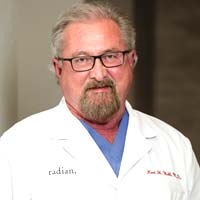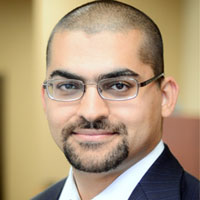A New Innovation in Hair Restoration Emerges
Hair restoration covers a broad scope of practices and
techniques used to help or cure those suffering from hair loss and thinning.
Techniques like tattooing the scalp to appear like hair, or performing surgery
that takes hair follicles from area of a persons body and places them in the
trouble area, have all been used to assist with hair restoration. And the
market is no where near slowing down. Lots of money is spent each year
searching for the solution to cure the ill effects of hair loss that plagues so
many.
While one of the best known procedures today involved the
use of surgery to remove grafts of hair from a donor site on the patient and
then implant them in the areas of the scalp no longer growing hair on its own -
there is a new technique still in its infancy that is promising to be the next
biggest, best thing in hair loss surgery.
According to a report by The
Telegraph, this latest technique, which was discovered by researchers at
Durham University and Columbia University Medical Center in New York and
published in the Proceedings of the National Academy of Sciences journal,
involves using grafts of donor follicles to induce the growth of hair in those
‘dead cells’ so new follicles will begin to grow again in the trouble areas.
Initial testing has only been done on mice, but did find
that by placing samples of dermal papilla cells, cloned in a lab from human
donors, between layers of the dermis and epidermis, new hair follicles did grow
in five of seven cases.
Professor Colin Jahoda of Durham University was quoted as
saying these findings are key in assisting with replacement skin techniques in
cases such as burn patients. What’s different about the procedure is that
it makes it possible to grow new follicles so hair restoration surgery can more
vastly be applied in cases for younger patients and women, over traditional
practices.
Hairfear - 10-22-2013
Frequently asked questions about hair transplant procedures
How much does a hair transplant cost?
Hair transplants can vary in price based off of the area in the world that you are interested in getting a hair transplant as well as the size of the area where you may need a hair transplant. Experienced doctors in the United States will often charge some of the highest prices for a hair transplant worldwide and this is why so many travelers make the move to other parts the world like Turkey, India, Thailand, Mexico...etc for their hair transplants.
Will a hair transplant hurt?
Although hair transplants may look like a particularly
unpleasant or painful experience is actually very little discomfort involved
with the surgery itself. Hair transplants are always done under an anesthetic so there's absolutely zero pain during the treatment itself. Many people actually relate the process as being very similar to going to the dentist for filling or root canal. Mild pain can persist over the course of postop treatment but he generally just resumes for a few days.
Who can deliver the best surgery?
It's usually best to consider working with surgeons who have and IAHRS certification or international alliance of hair restoration surgeons recognition. IAHRS can often deliver recommendations for the best surgeons in each particular area.
Is this scarring noticeable?
Any type of hair transplant will require the use of incisions throughout the scalp. There can also sometimes be a small scar from the donor area towards the back of the scalp. Asking to look at photos of the surgeon's previous work will help you to see roughly how bad the scarring could be. In most cases an experienced professional can limit the look of scarring and noticeable marks from the surgery.
How long does it take for the hair to grow?
In most cases hair growth will start within eight months and you can start to see a full effect from the hair transplant after a full year. The initial signs of growth can usually start between 3 to 4 months after the surgery.
Are the results permanent?
The hair follicles that are transplanted are generally the ones which are genetically resistant against the symptoms of baldness. As long as you receive hair loss treatment later in your life after the symptoms of balding have started to subside, you can have a better chance at permanent results.
While everyone know you've had surgery?
If you want to limit the chance that people may find out about your surgery it's important to give at least three weeks of healing as the surgical area will be affected and red just after surgery. After around a month of healing it can look far less noticeable. You could consider wearing a hat while time passes or opting for some extra time off if possible.
How long should I rest after surgery?
It's recommended to rest for at least a few days after surgery so that your body can recover. Trenton to over exert yourself and limit sexual activity, running in the gym for around 10 days after surgery.
Is it possible to lose more hair as a result of surgery?
There is always a chance of shock loss which happens when the hair is weak and miniaturizing after the surgery. As long as the surgeon is choosing the correct hair follicles and performing the surgery well it's possible to minimize the chance of this happening however.
Will I need another hair transplant?
The need for another transplant really depends on the individual. With a solid foundation surgery and working to potentially bolster results with drug therapy, you can improve the stability of the hair that was transplanted as well as prevent further loss. Getting a hair transplant early
on in your 20s or early on in life could lead to needing long-term transplants as hair loss can be progressive.







